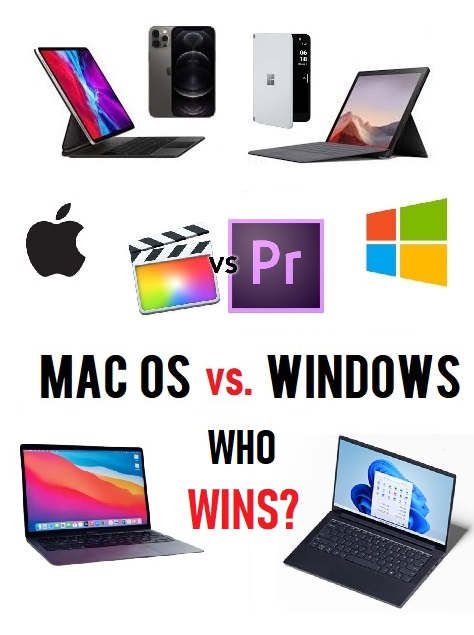Navigating between different operating systems (OS) can be tricky, especially if you need to run applications designed for another platform. In this guide, we’ll cover how to run Windows applications on Mac OS, explore best practices for using Linux in 2024, and compare Windows and Linux for various tasks. We’ll also dive into integrating Mac OS in a Windows network, the role of AI in future operating systems, and much more. Whether you’re a tech enthusiast, a professional, or just curious, this guide has something for you.

How to Run Windows Applications on Mac OS
If you need to use Windows applications on your Mac, there are several ways to go about it:
1. Boot Camp
- What It Is: Boot Camp is a built-in utility that allows you to install Windows alongside Mac OS.
- How It Works: You partition your Mac’s hard drive, install Windows, and choose which OS to boot into during startup.
- Pros: Provides native Windows performance.
- Cons: Requires rebooting to switch between Mac OS and Windows.
2. Virtual Machines
- What It Is: Virtual machines (VMs) allow you to run Windows within Mac OS using software like Parallels Desktop or VMware Fusion.
- How It Works: Install the VM software, create a new virtual machine, and then install Windows within that VM.
- Pros: Seamlessly run Windows apps alongside Mac apps without rebooting.
- Cons: May have slightly lower performance compared to Boot Camp.
3. Wine
- What It Is: Wine is a compatibility layer that allows Windows applications to run on Unix-like OSes, including Mac OS.
- How It Works: Install Wine, then run Windows applications directly from your Mac.
- Pros: No need for a full Windows installation.
- Cons: Compatibility can be hit or miss, and some applications may not work correctly.
Best Practices for Using Linux in 2024
Linux continues to evolve, and here are some best practices to keep in mind:
1. Stay Updated
- Why: Regular updates ensure you have the latest features and security patches.
- How: Use package managers like
apt,yum, ordnfto keep your system up to date.
2. Choose the Right Distro
- Why: Different Linux distributions (distros) cater to different needs.
- How: For general use, Ubuntu or Fedora are great. For security-focused tasks, consider Kali Linux or Parrot OS.
3. Backup Regularly
- Why: Protect your data against loss.
- How: Use tools like
rsyncorDeja Dupfor regular backups.
4. Use Strong Security Practices
- Why: Linux is generally secure, but it’s still important to follow best practices.
- How: Use strong passwords, enable firewall rules, and regularly review system logs.
Windows vs. Linux for Network Administration
Choosing the right OS for network administration depends on your specific needs:
Windows
- Pros:
- GUI Tools: Provides easy-to-use graphical tools for managing network settings.
- Active Directory: Integrated support for managing user accounts and permissions.
- Cons:
- Cost: Licensing fees for Windows Server.
- Less Customizable: Limited control over low-level network settings.
Linux
- Pros:
- Open Source: Free and highly customizable.
- Powerful Command Line: Offers powerful command-line tools for network management (e.g.,
iptables,netstat). - Cons:
- Learning Curve: Requires familiarity with command-line tools and scripting.
How to Integrate Mac OS in a Windows Network
Integrating Mac OS into a Windows network can streamline your workflow:
1. Use SMB for File Sharing
- What It Is: SMB (Server Message Block) is a protocol for sharing files and printers.
- How: Enable file sharing on your Mac via System Preferences > Sharing > File Sharing. Access shared files from Windows using
\\<Mac_IP_Address>.
2. Join a Windows Domain
- What It Is: A Windows domain allows centralized management of user accounts and permissions.
- How: Go to System Preferences > Users & Groups > Login Options > Network Account Server, and then add your Windows domain.
3. Use Microsoft Remote Desktop
- What It Is: A tool that allows you to connect to a Windows PC from your Mac.
- How: Download Microsoft Remote Desktop from the Mac App Store and set up a connection to your Windows PC.
The Future of Operating Systems with AI Integration
AI is transforming how we interact with operating systems. Here’s what to expect:
1. Enhanced Personalization
- AI Integration: OSes will use AI to adapt to user preferences and behaviors, providing a more personalized experience.
- Examples: Smarter notifications, predictive text, and personalized recommendations.
2. Improved Security
- AI Integration: AI can help detect and respond to security threats more quickly and accurately.
- Examples: Advanced threat detection and automated incident response.
3. Seamless Interoperability
- AI Integration: Better integration between different devices and operating systems through AI-driven automation.
- Examples: AI tools that synchronize your tasks and data across multiple devices.
How to Set Up Virtual Machines on Mac OS
Virtual machines are a great way to run different operating systems or applications on your Mac:
1. Choose Virtualization Software
- Options: Parallels Desktop, VMware Fusion, or VirtualBox.
- How: Download and install your chosen software.
2. Create a New Virtual Machine
- How: Open your virtualization software and follow the wizard to create a new VM.
- Details: Allocate resources (CPU, RAM) and set up a virtual hard disk.
3. Install the OS
- How: Insert the installation media (ISO file) and follow the prompts to install the operating system on the VM.
4. Install VM Tools
- Why: VM tools improve performance and integration between the host and guest OS.
- How: Follow the instructions provided by your virtualization software to install these tools.
Best Linux Distros for Cybersecurity Experts
For cybersecurity experts, choosing the right Linux distro is crucial:
1. Kali Linux
- Features: Comes pre-installed with a wide range of penetration testing tools.
- Best For: Ethical hacking and security assessments.
2. Parrot Security OS
- Features: Offers a lightweight, privacy-focused environment with numerous security tools.
- Best For: Security research and privacy-focused tasks.
3. BlackArch Linux
- Features: Provides a comprehensive suite of security tools and is based on Arch Linux.
- Best For: Advanced users who need extensive tools for security testing.
How to Secure Your Mac OS from Malware
Protecting your Mac from malware is essential:
1. Keep Software Updated
- Why: Updates often include security patches.
- How: Enable automatic updates through System Preferences > Software Update.
2. Use a Reliable Antivirus
- Why: Adds an extra layer of protection against malware.
- Options: Consider options like Malwarebytes or Bitdefender.
3. Enable Firewall
- Why: Helps block unauthorized access.
- How: Go to System Preferences > Security & Privacy > Firewall, and turn it on.
4. Avoid Suspicious Downloads
- Why: Prevents installation of potentially harmful software.
- How: Download software only from trusted sources.
The Role of Open Source in Linux Development
Open source is central to Linux development:
1. Community Contributions
- Why: Open source allows developers worldwide to contribute to Linux.
- How: Developers can contribute code, report bugs, and suggest features.
2. Transparency and Trust
- Why: Users can inspect the code for security and functionality.
- How: Access the source code and review it for any issues or vulnerabilities.
3. Innovation
- Why: Open source fosters innovation through collaboration and shared knowledge.
- How: Developers build on each other’s work, leading to faster advancements and improvements.
Comparing Windows and Mac OS for Video Editing
Both Windows and Mac OS are popular choices for video editing, each with its strengths:
Windows
- Pros:
- Software Variety: Supports a wide range of video editing software like Adobe Premiere Pro and DaVinci Resolve.
- Hardware Options: A broad range of hardware configurations to suit different budgets and needs.
- Cons:
- Consistency: Performance can vary depending on hardware and software configurations.
Mac OS
- Pros:
- Optimized Software: Applications like Final Cut Pro are optimized for Mac hardware.
- Integrated Environment: Seamless integration with other Apple devices and services.
- Cons:
- Cost: Generally more expensive hardware compared to Windows PCs.
Differences Between File Management on Mac OS and Windows
File management differs between Mac OS and Windows:
Mac OS
- File System: Uses APFS (Apple File System) or HFS+ (Mac OS Extended).
- Finder: The file management tool that allows you to browse, organize, and manage files.
Windows
- File System: Uses NTFS (New Technology File System).
- File Explorer: The file management tool that offers similar functionality to Finder but with a different interface.
How to Optimize Windows 11 for Gaming
For the best gaming experience on Windows 11:
1. Update Graphics Drivers
- Why: Latest drivers often include performance improvements and bug fixes.
- How: Download from the manufacturer’s website or use Windows Update.
2. Adjust Game Settings
- Why: Optimize settings for better performance.
- How: Access in-game settings and adjust graphics, resolution, and other options.
3. Enable Game Mode
- Why: Improves gaming performance by prioritizing game processes.
- How: Go to Settings > Gaming > Game Mode, and turn it on.
How to Choose the Right Linux Distro for Beginners
Selecting a beginner-friendly Linux distro can make a big difference:
1. Ubuntu
- Why: Known for its user-friendly interface and extensive documentation.
- Features: Large software repository and community support.
2. Linux Mint
- Why: Offers a familiar interface for users transitioning from Windows.
- Features: Easy installation and a wide range of pre-installed software.
3. Fedora
- Why: Provides a cutting-edge experience with the latest features.
- Features: Strong community and support for modern technologies.
Best Mac OS Tips for Productivity
Maximize your productivity on Mac OS with these tips:
1. Use Keyboard Shortcuts
- Why: Speeds up common tasks.
- How: Learn shortcuts for actions like switching apps (Command + Tab) and taking screenshots (Command + Shift + 4).
2. Utilize Mission Control
- Why: Helps manage multiple windows and desktops.
- How: Swipe up with three or four fingers on the trackpad or press F3.
3. Organize with Finder Tags
- Why: Easily categorize and locate files.
- How: Use color-coded tags in Finder to group related files.
Understanding Linux File Systems and Their Benefits
Linux supports several file systems, each with unique benefits:
1. ext4
- Why: The most widely used Linux file system.
- Benefits: Reliable, supports large files, and has journaling features.
2. XFS
- Why: Suited for high-performance and large storage.
- Benefits: Scalable and efficient for handling large files and volumes.
3. Btrfs
- Why: Offers advanced features like snapshots and self-healing.
- Benefits: Ideal for systems requiring high data integrity and recovery options.
With this comprehensive guide, you now have the tools and knowledge to tackle various operating system tasks, whether you’re running Windows apps on Mac OS, choosing the best Linux distro for your needs, or optimizing your system for specific uses. Feel free to explore these tips and practices to enhance your tech experience.








